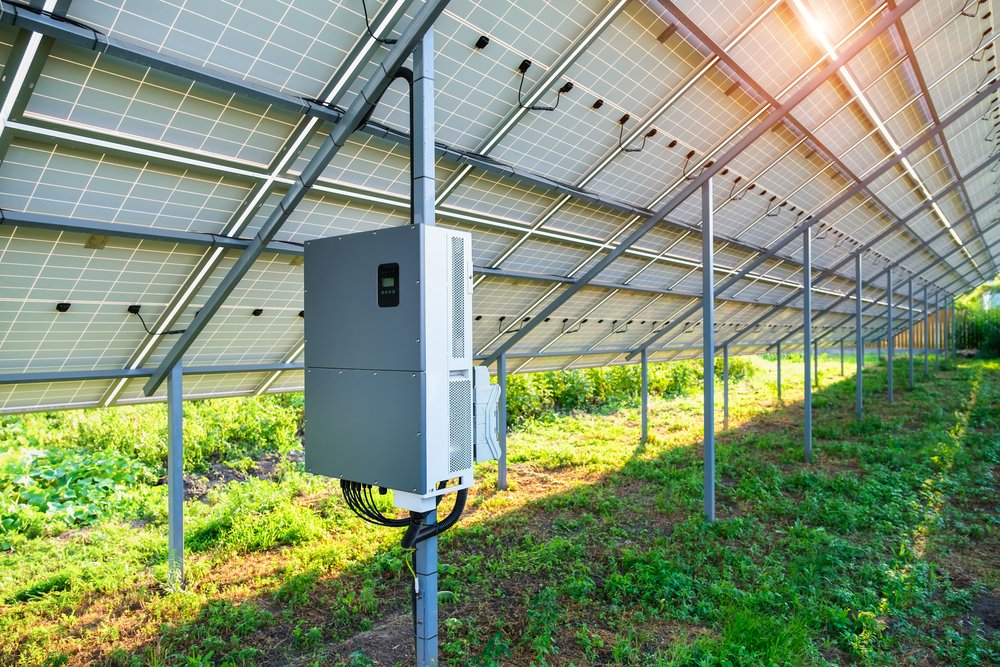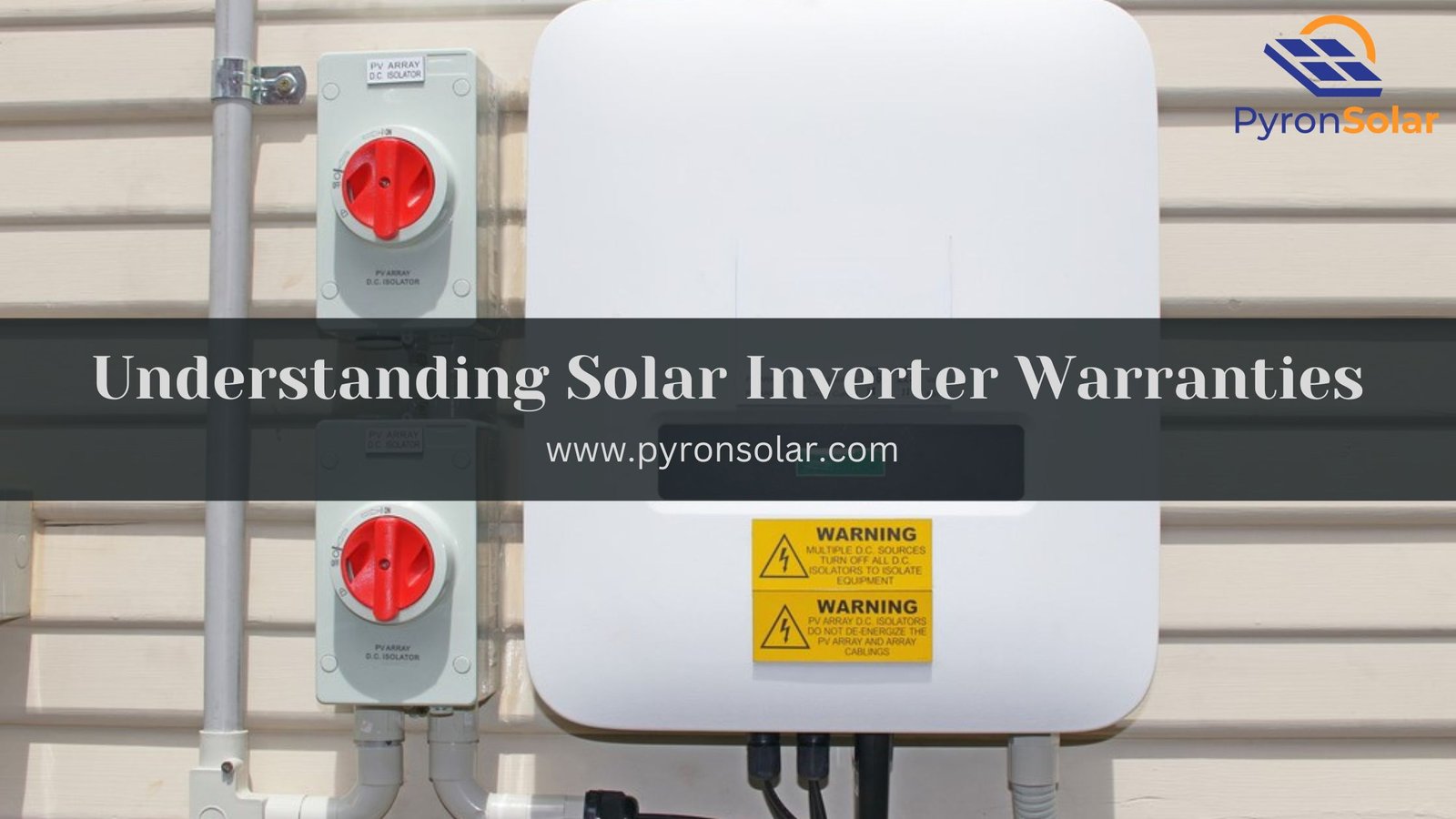Solar inverters are essential parts of a solar power system that convert direct current (DC) energy into alternating current (AC) that can be used to power home appliances or transfer the excess power back into the grid. Without these inverters, the DC power accumulated by solar panels wouldn’t be suitable for usage to operate electrical equipment.
Solar inverter warranties hold great significance in maximizing energy production, ensuring system safety, system monitoring, and compatibility with battery storage.

This article will provide you with valuable insights starting with a basic explanation of the solar inverter warranty and the main information related to product warranty, labor, parts shipping, and workmanship. At the same time, you need to know how to claim the warranty for a lengthy period by understanding its advantages and limitations.
What is a Solar Inverter Warranty? Why Does It Matter?
A solar inverter warranty is an assurance provided by the solar panel manufacturer or installer to assure protection for panel reliability, production output, and several other factors.
It is important to select the best warranty for solar panel inverters for the following reasons:
- System Reliability: If an inverter malfunctions, the entire solar system produces less energy, and having a warranty provides you assurance if anything goes wrong.
- Potential Energy Production: A failure in a solar inverter can result in reduced energy production or a total shutdown of your solar panel system.
- Financial Protection: Several popular inverter companies cover shipping fees and labor costs for installing new equipment.
- Manufacturer’s reputation: Typically, a longer warranty period provides confidence to users about the quality of their product, thereby enhancing the reputation of a manufacturer.
What is Covered Under Solar Inverter Warranties?
Solar inverter covers the most important factors such as product warranty, labor, transportation of parts, and workmanship. In terms of features, performance, and features, there is a variation in solar panel manufacturers and product types. For instance, top manufacturers like Fronius, Sungrow, and SMA have a 10-year warranty and other brands like SolarEdge and Sunways provide a 12-year warranty. Whereas product types like string inverters, microinverters, and power optimizers handle the DC-to-AC conversion efficiently.
Product Warranty
An inverter product warranty covers the quality of the equipment and plays a crucial role when a solar inverter undergoes any defect or mechanical issues like excessive wear and tear.
The warranty terms vary for different types of inverters. For example, string inverters have a 12 to 20-year warranty whereas microinverters and power optimizers come with a 25-year warranty.
Labor
The labor costs linked with diagnosing, repairing, or replacing inverters are an important consideration that isn’t covered by several manufacturers, despite the exceptions to this rule. Only a few reputed manufacturers provide this policy for system owners. Contrarily, if the labor costs aren’t covered by the warranty, the users have to pay an additional amount for any repairs or placements.
Shipping of Parts
The shipping costs are another significant aspect to consider in terms of solar inverter warranties. Typically, popular inverter manufacturers such as Enphase, SolarEdge, and SMA include shipping costs for replacing the equipment as a part of the warranty agreement.
These are the following conditions where a customer has to bear these costs:
- Invalid Claims: If a claim isn’t valid, it means that the manufacturer hasn’t verified that it’s a genuine claim. As a result, the customer has to bear the shipping costs.
- Wrong Process: If any customer hasn’t followed the proper Return Merchandise Authorization (RMA) process, customers have to manage the shipping costs.
Workmanship
A workmanship warranty is another type of warranty to ensure the quality and integrity of installation work performed. Although these warranties are valid for 1 to 2 years to cover the installation errors, the duration depends upon your region and manufacturer.
The installer is responsible for repairing or replacing the faulty product with a new one without any additional cost to the customer. This approach helps to ensure that the work meets the quality industrial standards and if any issue occurs, it is the responsibility of the installer to solve them under the workmanship warranty.
Whereas, a manufacturer provides a separate warranty to guarantee that the equipment is free from defects for a specified period.
Limitations and Exceptions
These are the common limitations and exceptions found in solar inverter warranties and their implications for owners:
1. Transferability: Several solar inverters having a warranty period of 25 to 30 years, offer transfer to new homeowners. However, some companies might charge a transfer fee by asking for all the relevant documentation and warrant the transfer process.
2. Installer Certification Requirement: Some manufacturers stipulate that the installation must be done by a certified professional. Suppose, you prefer an uncertified installer or performing a DIY installation could void the warranty.
3. Equipment Relocation: If you decide to move your equipment and re-install solar inverters in a new location, there are chances that your warranty might be void if you haven’t followed the terms and conditions before relocating.
4. Wire and Cable Coverage: Many companies don’t even provide warranty coverage for wires and cables, even if they manufacture the inverter. You need to read the terms and conditions carefully to find out if there are any mentions of wires and cables.
5. Exclusions for Acts of Nature: Most often, companies exclude warranties for damages caused by natural disasters or extreme weather conditions. You need to be aware of the fact of these exclusions by thoroughly reading the terms and conditions of your warranty to understand your warranty rights.
You need to read the fine print and consult with the manufacturer or installer if you have any queries about the warranty terms. Most importantly, these specifications vary from one inverter company to another. Therefore, understanding the details of your warranty is crucial to confirm that you’re protected in case of any damages or issues.
How Long is an Inverter Warranty?
Usually, inverter manufacturers offer a standard warranty period of 10 years for string inverters, whereas module-level power electronics (MLPEs) like microinverters or power optimizers offer 25-year warranties. In the case of an extended warranty period, few manufacturers allow you to purchase extra warranty time for their products. You have to pay a one-time fee to extend the time for the installers to fix or replace the product if something goes wrong.
These are the main factors that affect the warranty terms:
- Consistency and Robustness: Premium quality inverters are designed to be durable with longer warranty periods.
- Reputed Brands: You need to choose trusted brands with a decent track record in the industry to get longer warranty periods to provide confidence to customers about their products.
- Inverter Type: The warranty period is influenced by the type of technology used. For instance, microinverters have longer warranties when compared to string inverters.
Additional factors such as efficiency, voltage, lifespan, installation angle, and irradiance system loss can affect the warranty period.
Let’s summarize the standard and extended warranty period from the top solar inverter manufacturers:
| Manufacturer | Standard Warranty | Extended Warranty Availability |
| Enphase | 15 years | Unknown |
| Solaredge | 12 years | 20 to 25 years |
| SMA | 5 years | Upto 10, 15 and 20 years |
| Tigo | 2 years | Upto 10 years |
| Schneider Electric | 3 years | Unknown |
| Fronius | 2 years | Upto 10 years |
NOTE: The above-mentioned warranty details vary based on the model of the inverter and region. It is recommended to check the manufacturer’s website for up-to-date information.
How do I make a claim?
If you’re planning to apply for a solar inverter’s warranty claim, the process might vary depending upon the manufacturer, and it is important to follow these steps:
- Check that your warranty is registered with the manufacturer during the installation.
- Identify the issue by detecting the error codes on the inverter’s display to identify the issue.
- Contact the manufacturer’s customer service of your solar installer to receive help to troubleshoot the issue and decide if it’s resolved under a warranty.
- If the issue still persists, you should file a claim by providing details about the issue and your system, which includes the serial number of your inverter and installation date.
- After your claim is approved and filed, you should wait for the required service work to get completed which includes either repairing the inverter or replacing it completely.
- Ensure that the work order is completed after the service work is done, which is typically taken care of by the service technician.
These are the variations in processes across different scenarios and manufacturers on how the situation might be handled:
1. Fronius/FSP: Includes material and labor charges within the warranty and requires only travel charges to be paid (Routine Inspection).
2. Enphase: Only the replacement cost was covered under warranty and the client has to pay travel and labor charges (for Inverter Replacement).
3. Magnum: The client was invoiced for new materials, labor, and travel charges since the inverter wasn’t under warranty period (for installing a new unit in place of the malfunctioning inverter).
When Does the Warranty Start?
The warranty period for solar inverters starts when the product is placed into service at the installation site. If the product isn’t installed within a certain interval, the warranty period starts automatically. Few manufacturers start the warranty period 6 months after the product is shipped from the factory.
The beginning of the warranty period influences the effective coverage duration and in some cases, if the inverter isn’t installed after the purchase the warranty period begins no matter if the product is kept in storage. As a result, the coverage duration is shortened once the inverter is operating.
Finally, you need to know that the standard warranty period for solar inverters varies according to the manufacturer and the type of inverter used.
Ray is an avid reader and writer with over 25 years of experience serving various domestic and multinational private and public energy companies in the USA.

